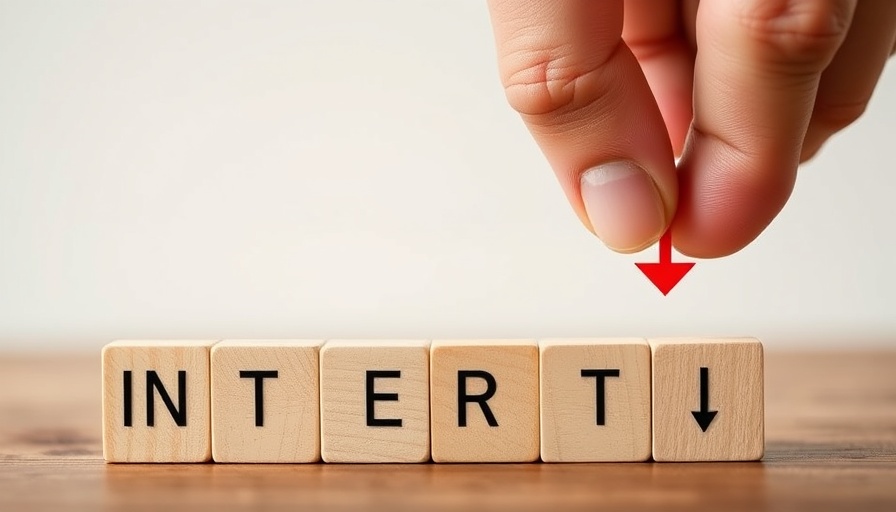
Understanding Interest Rate Buydowns: A Smart Move for Homeowners
The real estate market in 2025 presents both challenges and opportunities for homeowners, especially when it comes to financing a home. One popular strategy that has gained traction is the concept of interest rate buy-downs. By paying an upfront fee to lower your mortgage rate, buyers can enjoy substantial savings in the long term, but is it the right move for you?
What is an Interest Rate Buydown?
An interest rate buydown occurs when the buyer pays upfront to reduce their mortgage interest rate. This can be a temporary arrangement lasting only the first few years or a permanent reduction throughout the life of the loan. According to experts, this approach can be particularly beneficial in a climate of high mortgage rates.
How Buydowns Can Enhance Home Affordability
The most immediate impact of an interest rate buy-down is on the affordability of your monthly mortgage payment. A lower interest rate translates to lower monthly outflows, making it easier for buyers to manage their home-related expenses without stretching their budgets. For example, if you secure a 6% mortgage instead of a 7% mortgage, your monthly payments on a $400,000 loan could reduce significantly, allowing you to allocate extra funds towards other homeownership responsibilities.
Calculating Your Return: The Break-Even Point
To determine the viability of buying down your interest rate, it's essential to calculate the break-even point—the moment when your savings from reduced monthly payments surpass the cost of the points purchased. Typically, each point costs around 1% of the loan amount and can reduce your interest rate by about 0.25%. If it costs you $3,000 to buy down your interest and saves you $48 each month, you would break even at approximately 63 months. Understanding your long-term plans for living in the home is critical: if you plan to stay for a long time, then buying points often makes sense.
Alternatives to Buying Points
Notably, there are other avenues to consider before deciding to buy down your rate. For instance, making a larger down payment can help lower your borrowing amount, thereby reducing your interest payments. If cash flow is a concern at the time of closing, you may also explore lender credits—where a lender covers some of your closing costs in exchange for a slightly higher interest rate. This balance between upfront costs and long-term savings is something every prospective homeowner should weigh carefully.
Temporary vs. Permanent Buydowns: Making the Right Choice
When considering an interest rate buydown, you will need to decide between a temporary or a permanent solution. A 2-1 buydown, for instance, can lower your rate by two percentage points for the first year and one point in the second, returning to the original rate afterward. This arrangement could be advantageous if you anticipate a future refinance opportunity or want to ease into homeownership expenses.
The Bottom Line: To Buy or Not to Buy?
In conclusion, buying down your interest rate can be an effective tool for enhancing home affordability in today's market. Homeowners seeking to tackle higher rates should analyze their financial situation carefully, taking into account the total cost of the buydown, the length of time they plan to stay in their home, and available alternatives. Understanding all aspects of your mortgage financing options can not only save you money but also lead to a more sustainable homeownership experience.
For more personalized financial tips and insights, consider subscribing to our newsletter. This way, you can stay informed about the latest strategies that can enhance your real estate journey.
 Add Row
Add Row  Add
Add 




Write A Comment